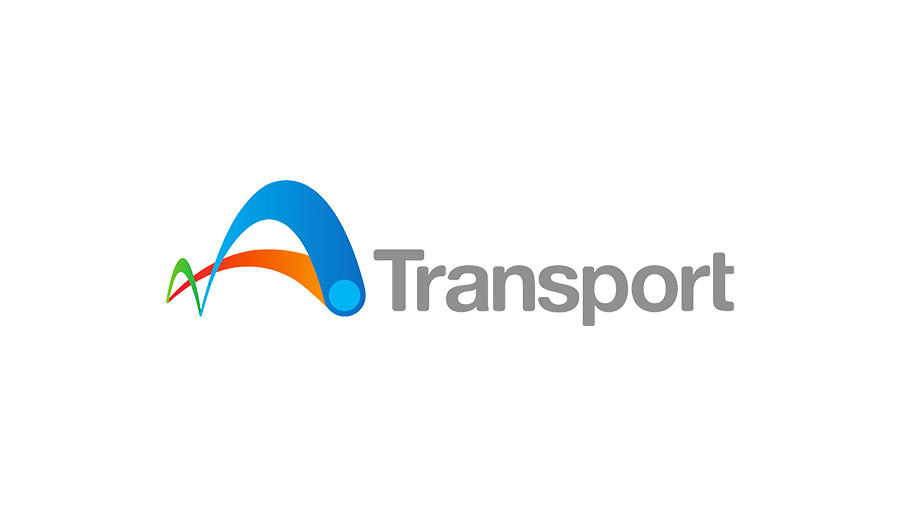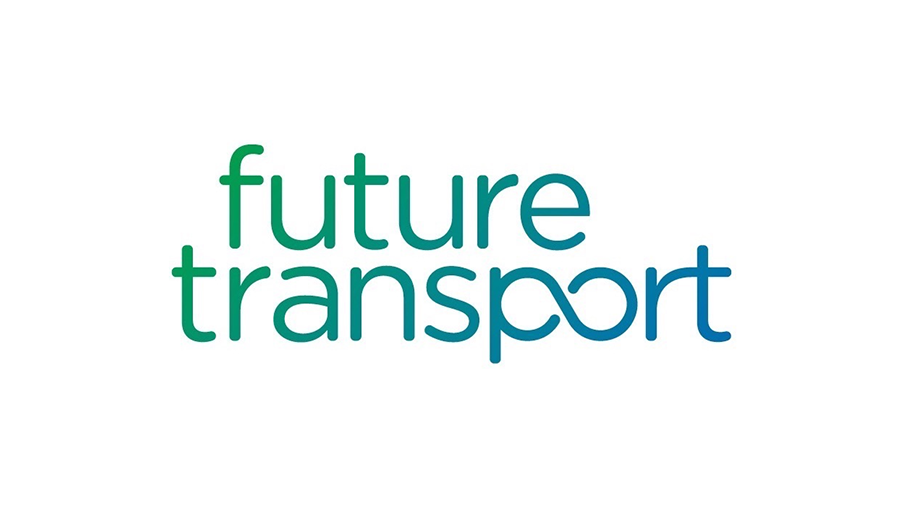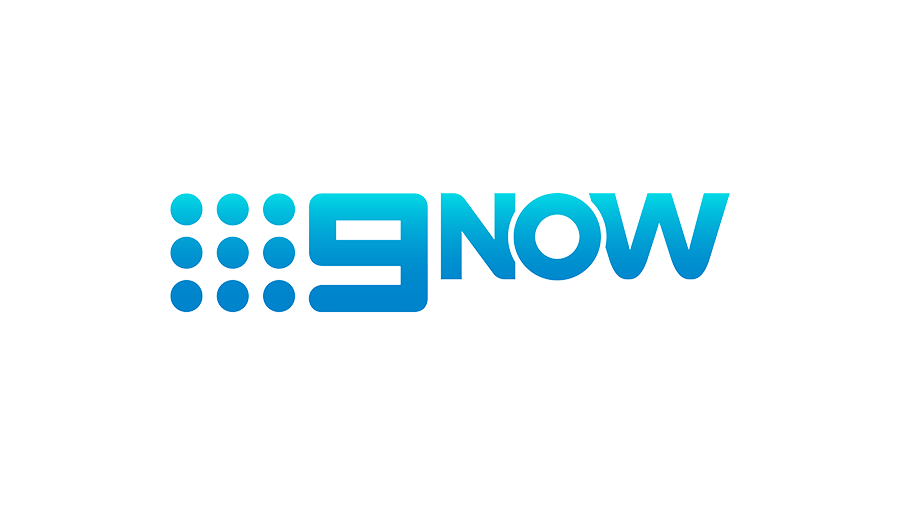Propeller
Managing geospatial data for worksites
Overview
The Propeller Platform visualises worksite progress in a survey data and BIM software ecosystem. As Product Design Team Lead, I used customer insights to guide the design process, supported by a strong partnership between product designers and engineers.
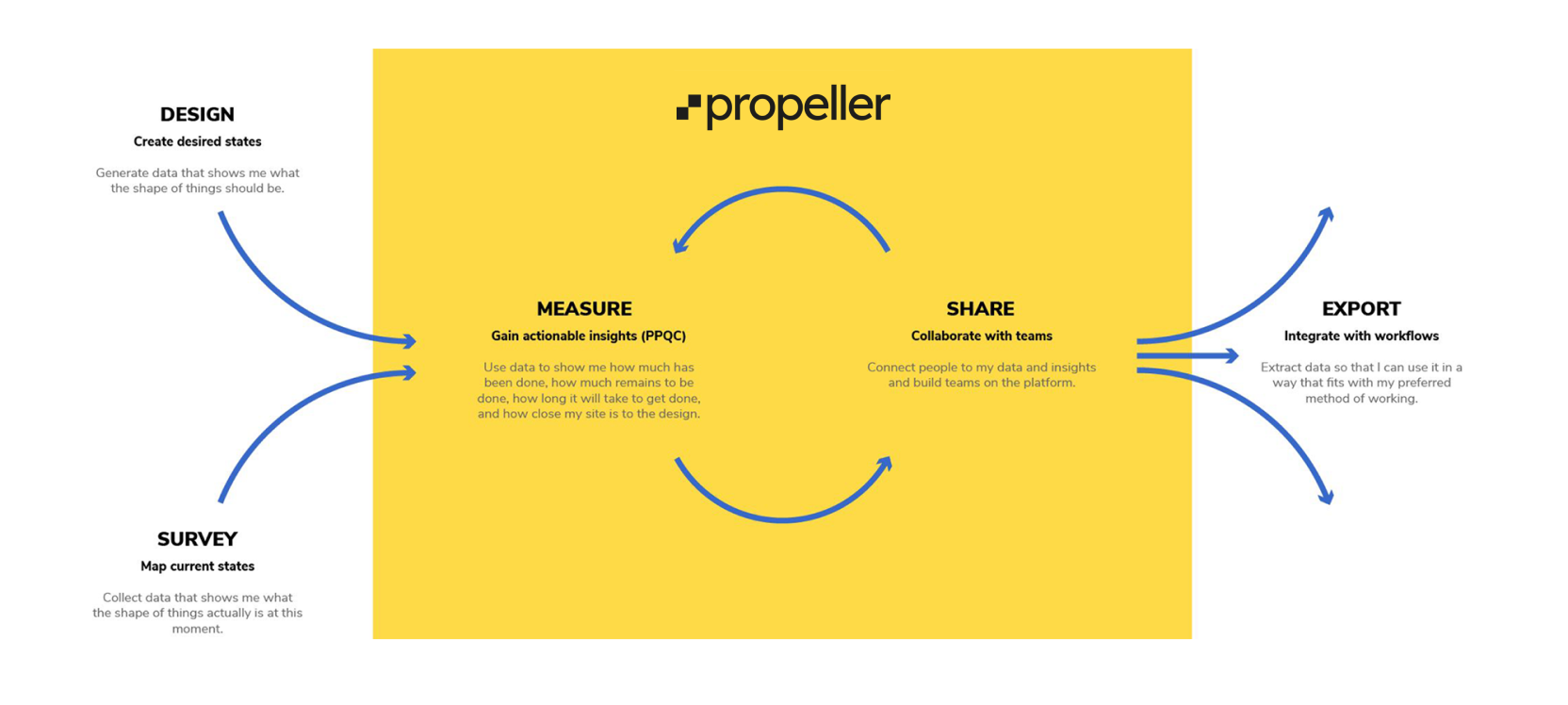
Propeller platform
Functionality: Provides comprehensive solutions for monitoring progress, productivity and quality on worksites in construction, mining, and landfill sectors.
Integration: Integrates hardware, software, and data processing for worksite progress visualisation.
Market position: Aligned with customer workflows in a survey data and BIM software ecosystem.
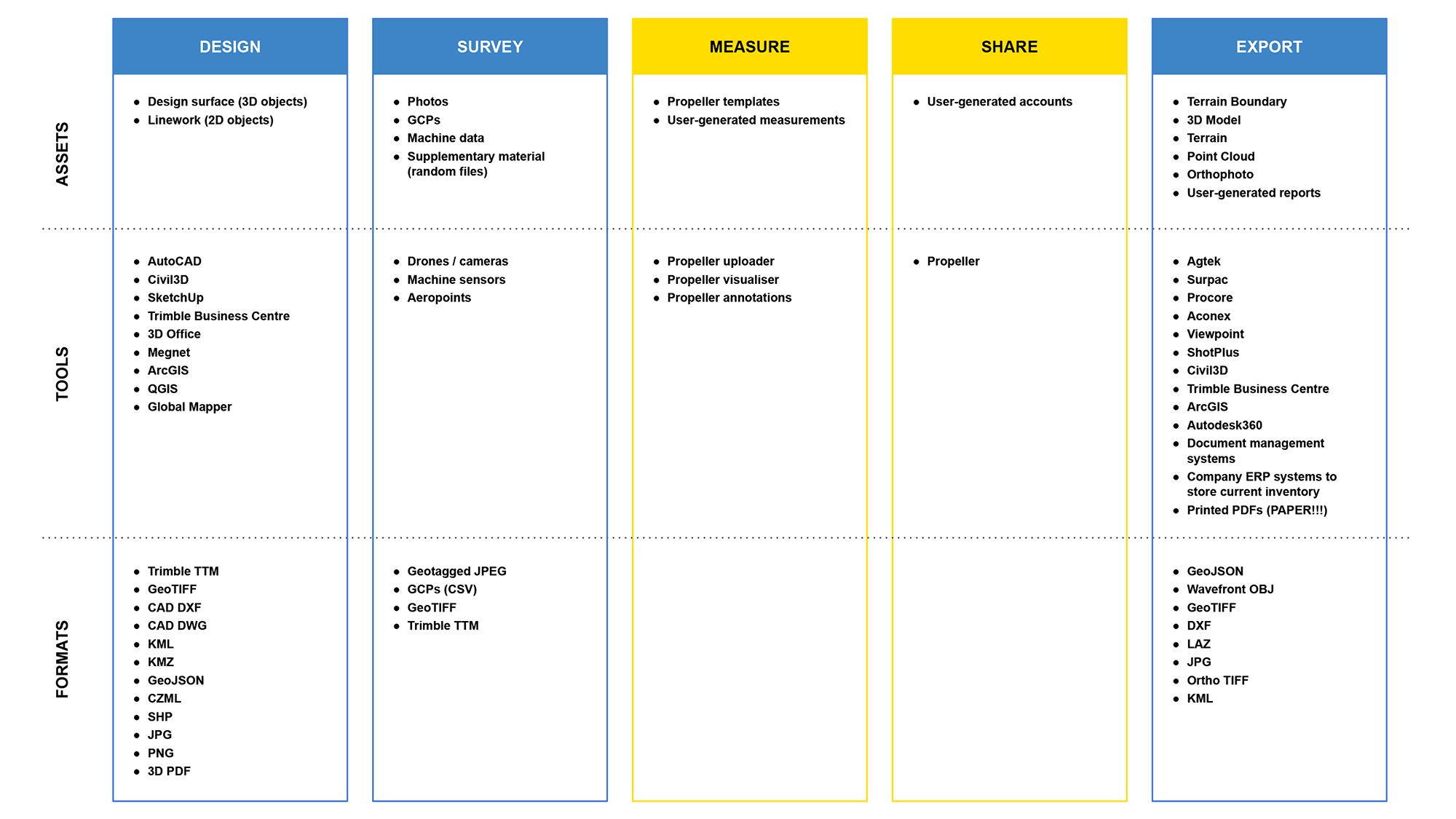
Customer insights
Research methods: Included feedback from sales and customer service, site visits, and remote interviews.
Data analysis: Utilised various methods to highlight key insights, map customer journeys, establish primary personas, and identify pain points and opportunities.
Tools: Used in-platform analytics and software integrations (e.g., AppCues, Typeform) to track user behaviour and inform feature improvements.
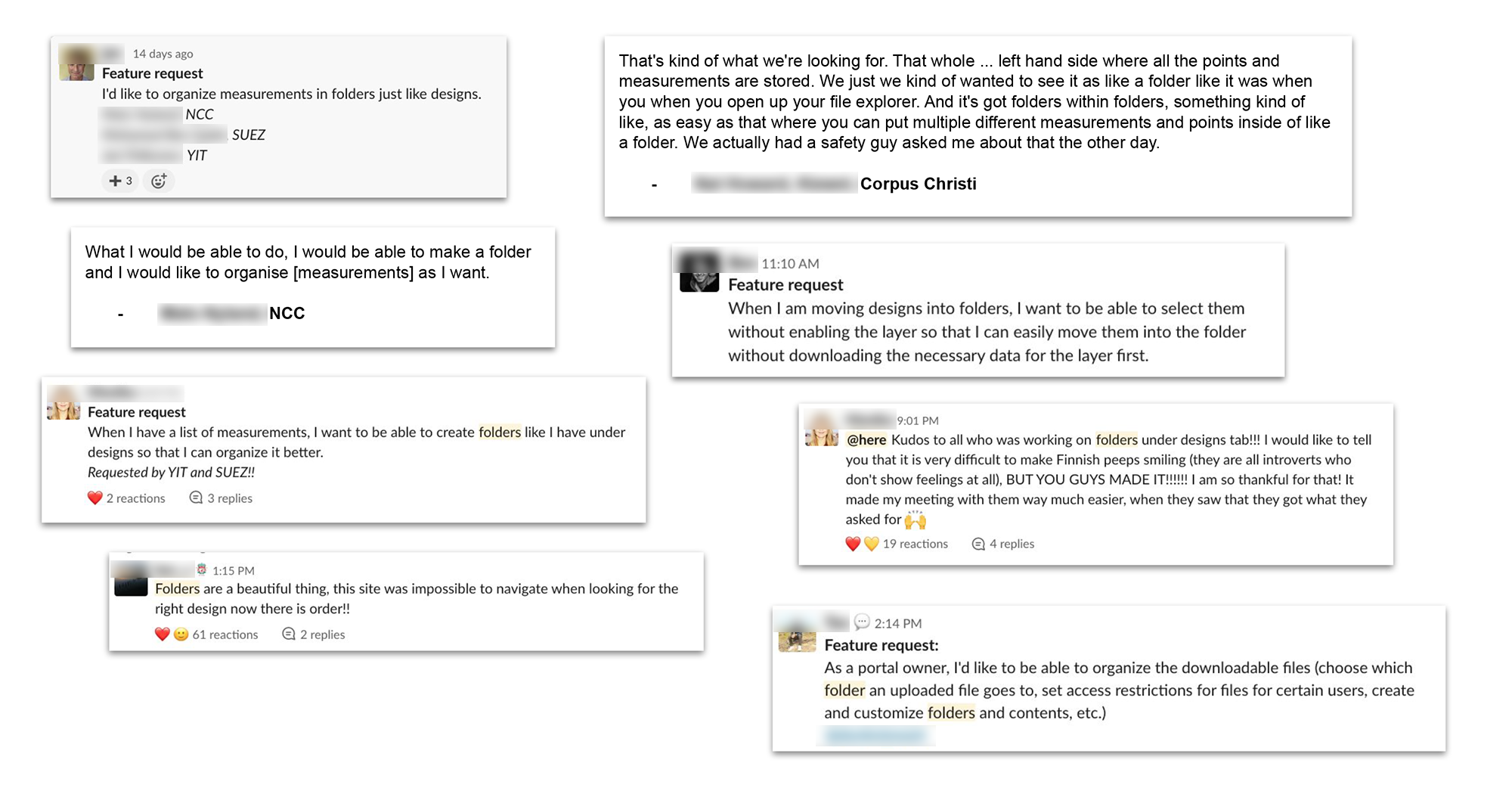
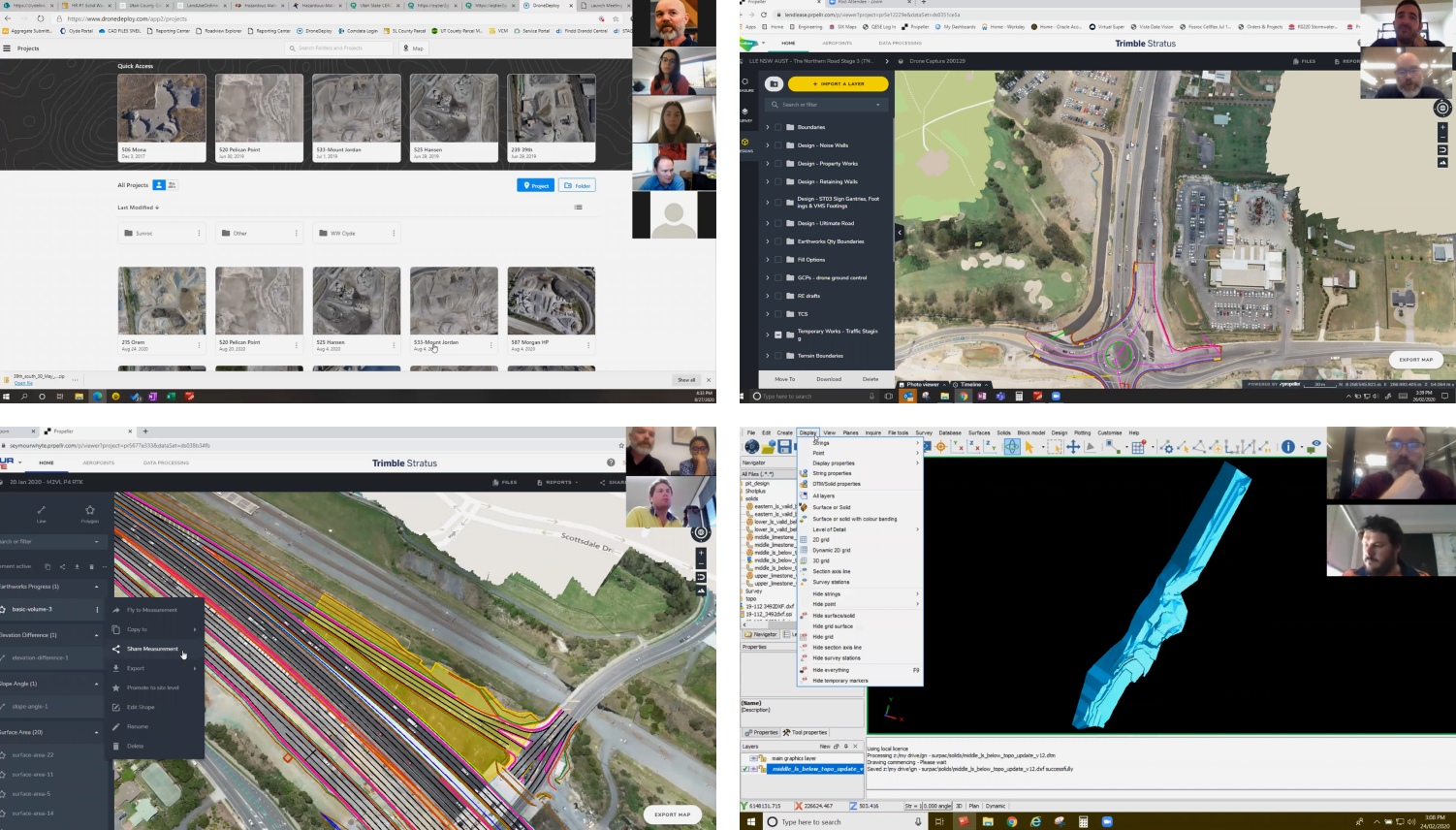
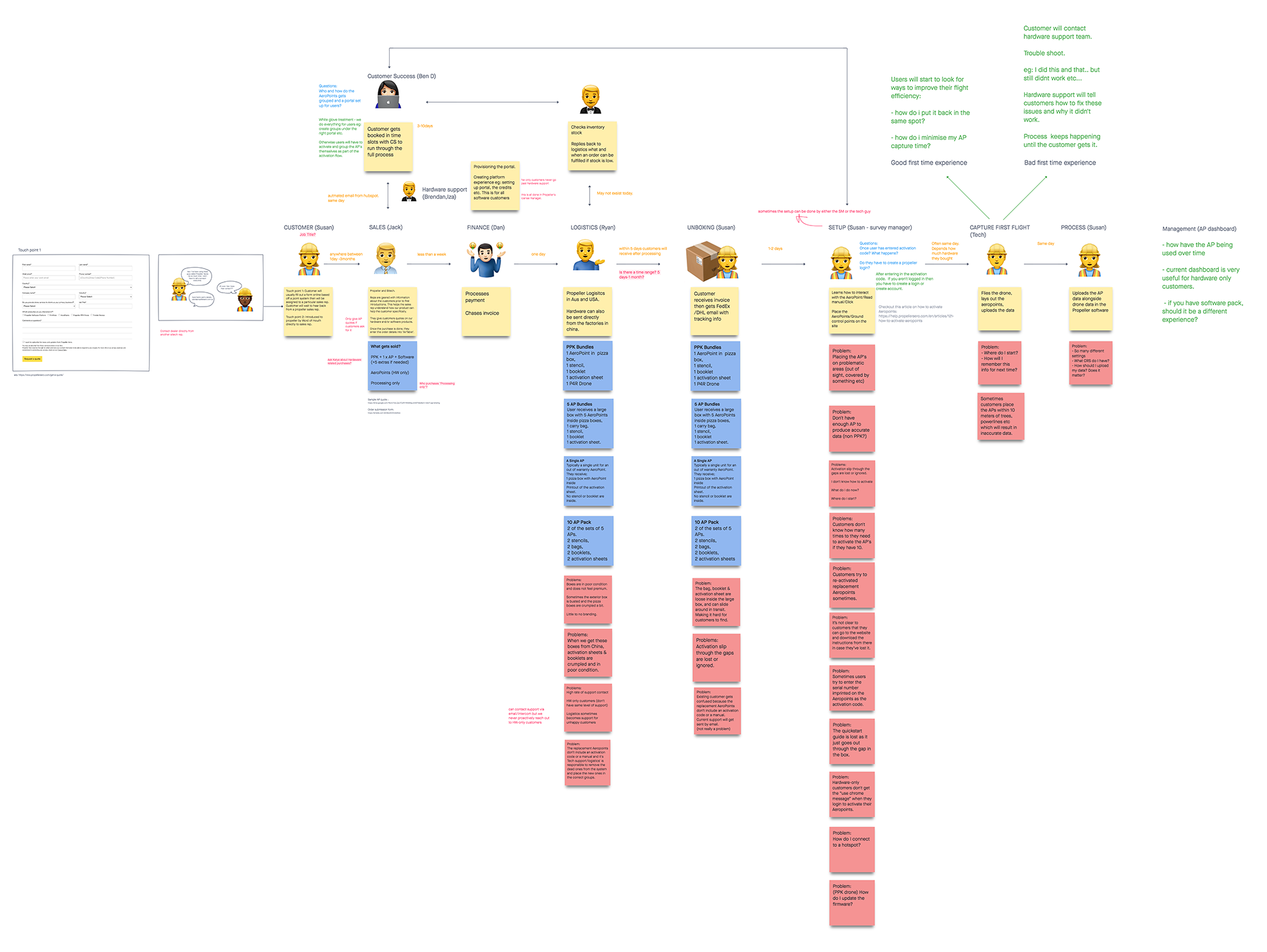
Design strategy and process
Site-wide optimisation, less frequent surveys: This method aimed to enhance the efficiency and efficacy of geospatial surveys across sites, done less often. It included thorough data analysis and reporting to streamline the process for thorough data gathering, crucial for future planning and decision-making.
Design for part site, high-frequency surveys: Developed custom systems for small-scale site surveys, focusing on daily or weekly visual analysis. The design prioritized quick response and flexibility for efficient real-time data collection and analysis on-site.
Dual track agile process: My design process involved various skills and practices to improve current solutions, identify market opportunities, and foster innovation. This included: customer research, defining MVP solutions, usability evaluations, feature testing, collaboration with analytics teams, and promoting design processes.
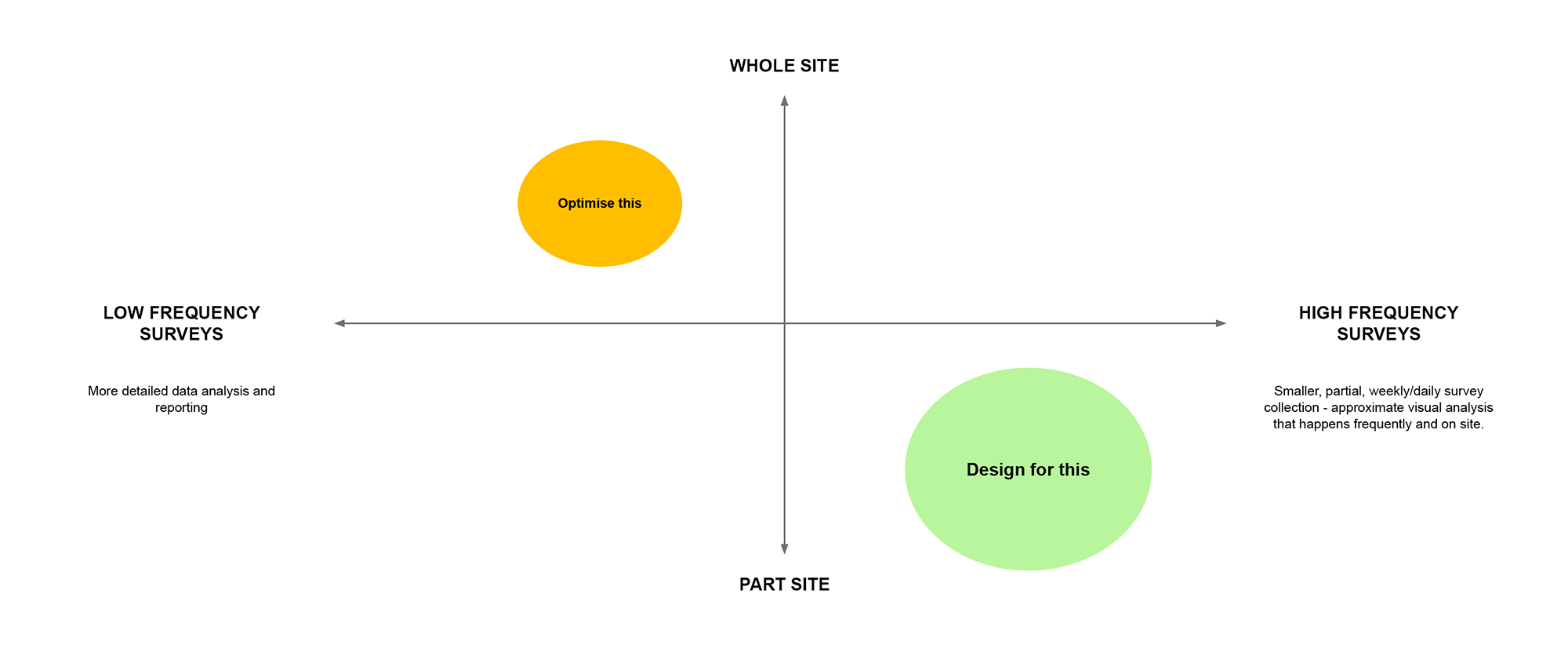
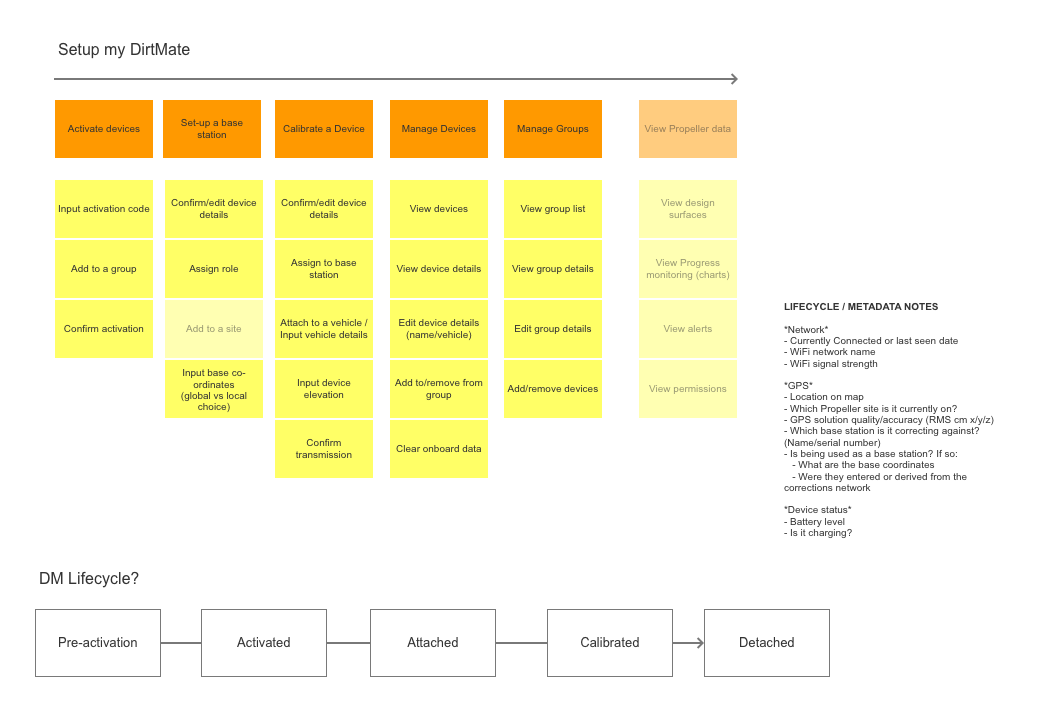
Design and delivery
Exploring solutions: After defining the MVP, the product design team would ideate using sketching and rapid prototyping to collaborate with product and engineering on developing testable concepts for early customer validation.
Prototyping and testing: Early concept validation allowed engineering to start developing functional software sooner, using real customer data to showcase the solution's value. This approach also provided valuable feedback through alpha and beta testing.
Production: Prototype validation led to production. Usability testing insights guided design refinement, enhancing production and future roadmap. Designers collaborated with engineers on interactions and styles.
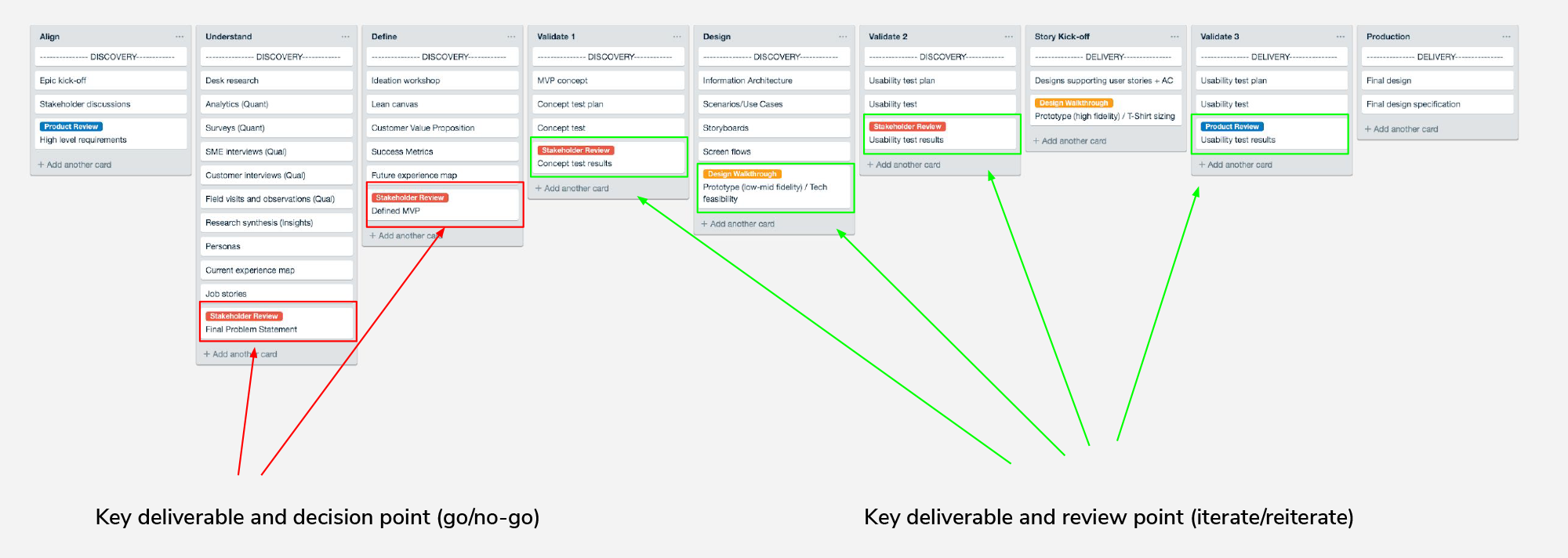
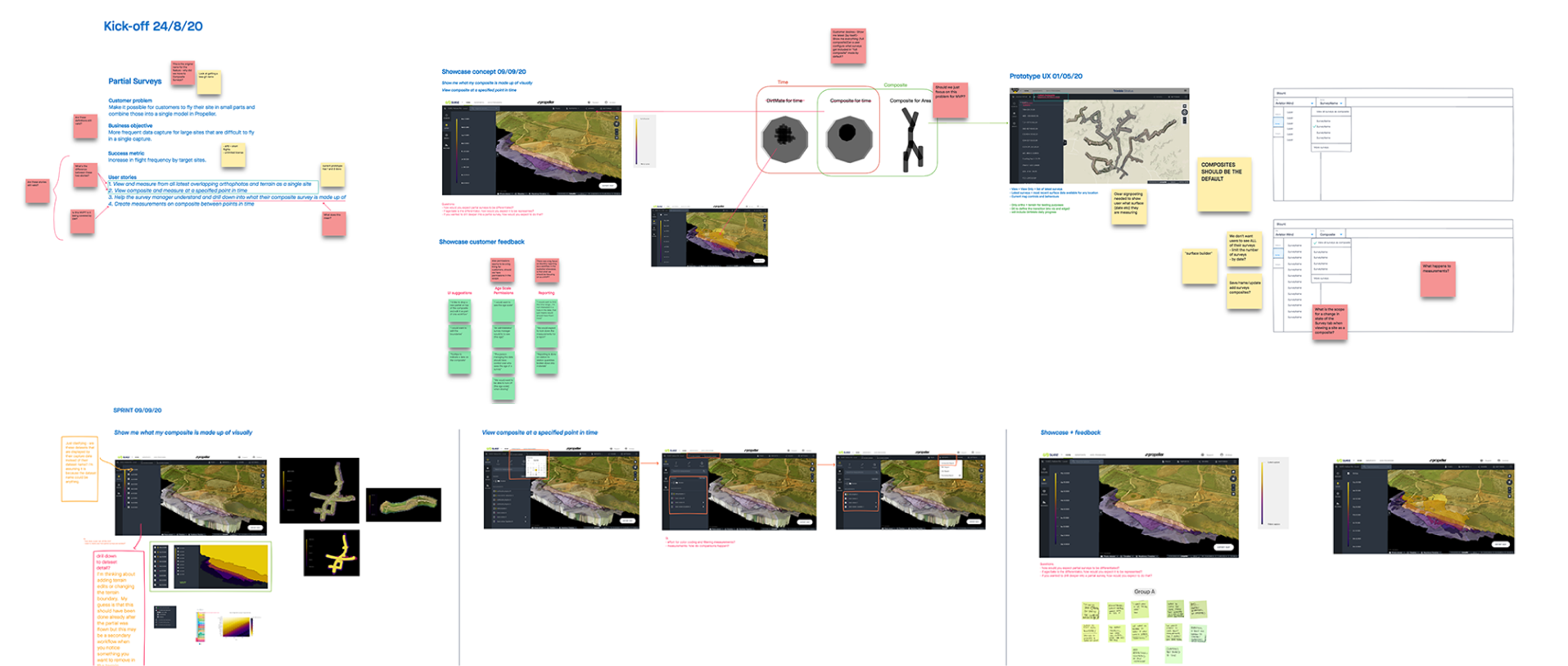

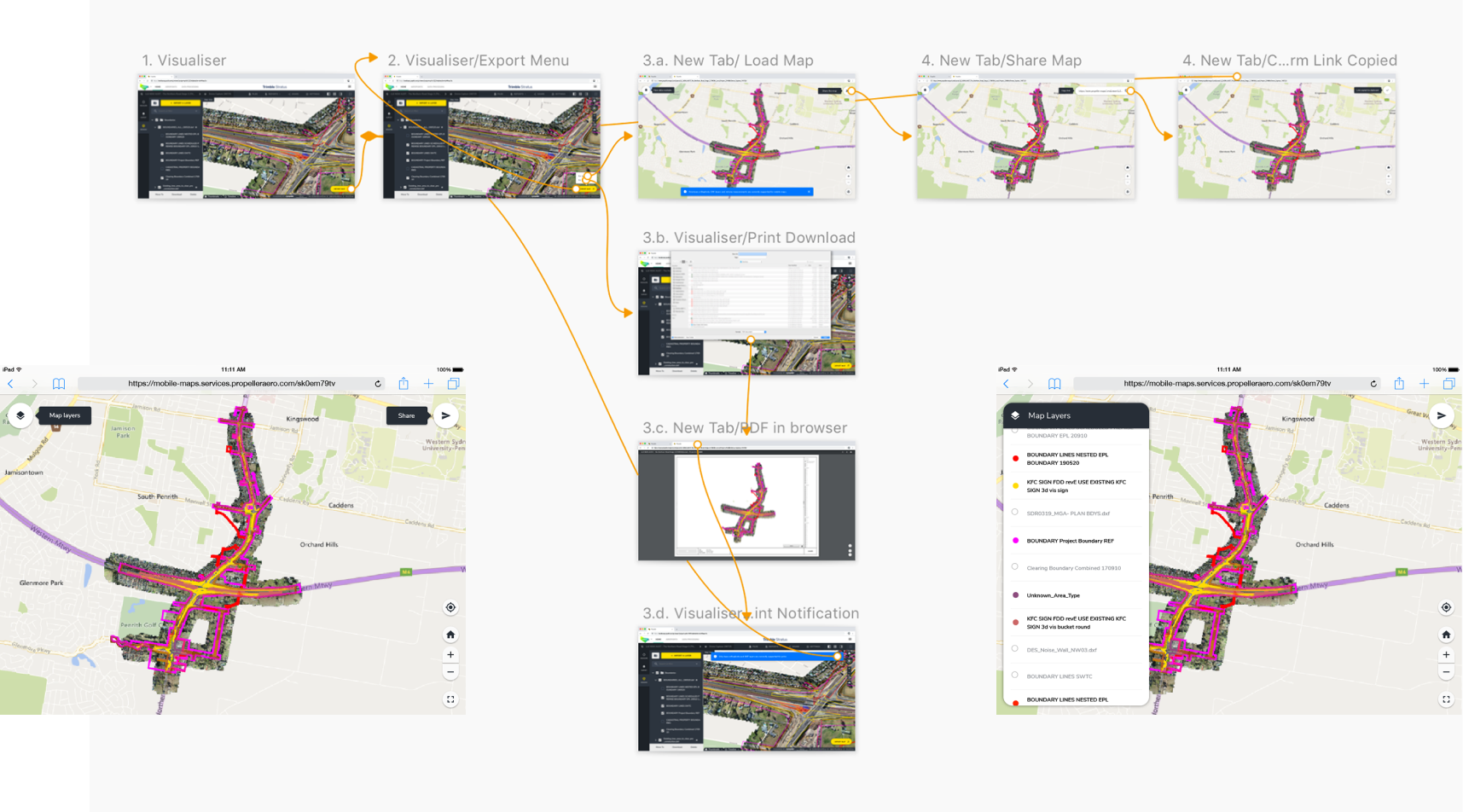

Summary
As Product Design Team Lead, I utilised customer insights from sales, site visits, and remote interviews to guide the design process, resulting in key personas, pain points identification, and improvement opportunities. Lean UX methodologies, story mapping, and close collaboration with product and engineering teams led to the validation of the MVP early on. Usability testing data drove final design refinements to meet user needs, supported by a strong partnership between product designers and engineers.
